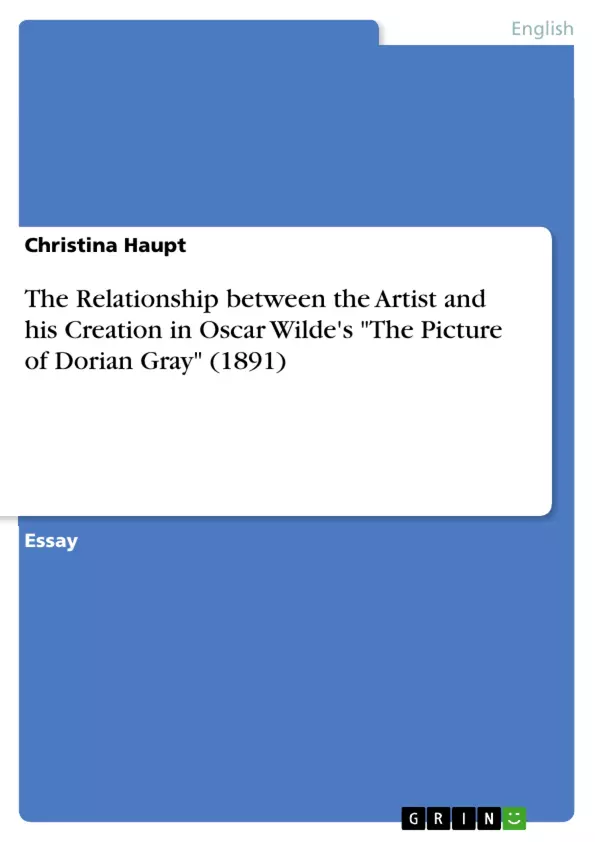This essay examines the artist's attitude towards his model and present two characters who can be called artists. Furthermore, the most important transitions between art and life will be presented. In a last point, there is a comparison of the artist as he is presented in the novel with Walter Pater's description of Leonardo da Vinci.
Inhaltsverzeichnis (Table of Contents)
- The Artist and his Creation in Oscar Wilde's The Picture of Dorian Gray
- Basil Hallward: The Artist and his Muse
- Transpositions of Life and Art
- The Picture as a Living Reflection
- The Fatal Consequences
- The Real Artist: Basil and Lord Henry
- The Artist's Influence on the Model
- Basil Hallward and Leonardo da Vinci: A Comparison
Zielsetzung und Themenschwerpunkte (Objectives and Key Themes)
This essay examines the relationship between the artist and his creation in Oscar Wilde's The Picture of Dorian Gray. The essay aims to analyze the artist's attitude towards his model and presents two characters who can be called artists: Basil Hallward and Lord Henry Wotton. Furthermore, the essay examines the most important transitions between art and life as portrayed in the novel.
- The artist's dependence on the model
- The relationship between art and life
- The influence of the artist on the model
- The nature of artistic creation
- The concept of beauty and its consequences
Zusammenfassung der Kapitel (Chapter Summaries)
- The essay begins by exploring the relationship between Basil Hallward, the artist, and Dorian Gray, his model. Basil is portrayed as an artist whose success depends on his inspiration, which he finds in Dorian's youthful beauty. The essay discusses Basil's possible homoerotic feelings for Dorian and his reluctance to exhibit the portrait for fear of revealing his own emotional investment in the work.
- The essay then examines the transpositions of life and art in the novel, focusing on the moment when Dorian makes a wish to remain young and beautiful while the portrait ages. This wish, driven by Lord Henry's influence, sets in motion a process where Dorian lives his life as if it were an artwork, seeking only sensual fulfillment and fleeting pleasures. The essay explores how the portrait becomes a reflection of Dorian's moral decay, while his physical appearance remains unchanged.
- The essay analyzes the roles of Basil and Lord Henry as artists, arguing that both characters contribute to Dorian's corruption in different ways. Basil's portrait serves as a catalyst for Dorian's objectification of his own appearance, while Lord Henry's hedonistic philosophy and intellectual influence shape Dorian's worldview and actions.
- The essay concludes by comparing Basil Hallward to Leonardo da Vinci as described by Walter Pater. While both artists choose beautiful models, Basil lacks the necessary curiosity and intellectual depth to be considered a genius in the same way as Leonardo. This lack of curiosity, according to the essay, contributes to Basil's artistic failure and ultimately his tragic demise.
Schlüsselwörter (Keywords)
Key terms and concepts explored in the essay include the artist-model relationship, artistic creation, transpositions of life and art, beauty and decay, the nature of genius, and the influence of hedonism. The essay also draws upon concepts from Oscar Wilde's The Picture of Dorian Gray and Walter Pater's Studies in the History of the Renaissance, particularly Pater's description of Leonardo da Vinci.
- Quote paper
- Christina Haupt (Author), 2015, The Relationship between the Artist and his Creation in Oscar Wilde's "The Picture of Dorian Gray" (1891), Munich, GRIN Verlag, https://www.grin.com/document/369412



